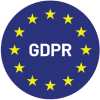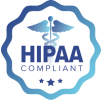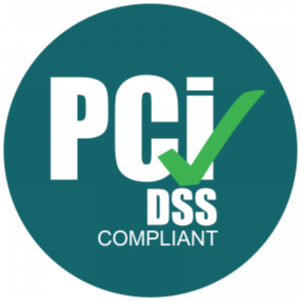Interested in how trade associations can maximize their research efforts? You’re joining us halfway through a four-part series covering trade association research parameters and protocols. Want to start from the beginning? Check out “Policymaking: Why Trade Associations Need Real-Time Public Sentiment Data” and “Going Beyond Surface-Level Research: How Trade Associations Can Conduct Meaningful Grassroots Studies” to dive deeper into this topic.
What does trade association lobbying involve?
It’s an activity that advocates (i.e., promotes) specific industry or economic category interests and contributions. How?
- By meeting with and engaging policymakers in government and state legislatures to construct policies, protocols, and regulations that favor association members or customer communities.
- Promoting industry or brand contributions to targeted segments and organized employee/customer groups.
Either way, it’s a complex process that requires due diligence, member or group feedback, and securing consensus from all sides. Here are steps vital to launching an advocacy initiative for your trade association:
1. Identify the key problems or expectations (via cross-section and longitudinal surveys) that impact members’ businesses, professions, or markets, reflecting consensus thoughts and positions.
2. Connect with rainmakers to communicate interested party proposals. Viable avenues for doing this indicate that you should:
- Contribute to political campaigns through:
- PACs (political action groups)
- ”Issue campaigns” that have no political affiliation but connect compellingly to your industry.
- Attend scheduled meetings or town hall events and submit written documents as regulations require.
- Run industry-centric SM and mainstream channel ads highlighting the benefits and value propositions to targeted audiences.
- Develop YouTube video chats that deliver the pros and cons in a credible manner.
3. Ensure you’re prepared for any curve ball your targeted audience may throw at you by arming yourself with consensus evidence generated by professionally conducted surveys, essential information, expert opinion, and support data.
4. Organize engaging events or conferences around high-interest topics that create networking opportunities. In this regard:
- Go the extra mile to invite relevant policymakers, government officials, consumer bodies, and influential stakeholders to attend.
- Don’t let any opportunity to develop sustainable relationships and foster trust with influencers slip away.
5. Monitor and evaluate the regulatory/policymaking entities and customer communities most relevant to your members’ interests, including the inroads your efforts have made so far. From there:
- Make new lobbying recommendations.
- Negotiate endorsements.
- Implement vital remedial adjustments to your strategy.
6. Stay alert, committed, and vigilant by:
- Testifying at legislative hearings.
- Pumping the information spigot once you have influencer attention.
- Mobilizing grassroots member groups to create impact at organized events.
- Working with third-party trade associations demonstrating common interests to accelerate your advocacy efforts.
7. Maintain a policy of transparency throughout your lobbying process to suppress criticisms around accusations your efforts represent:
- Causes that are not in members’ best interests.
- Conflicts of interest.
- Transgressing regulatory boundaries.
Why is it difficult for associations to prove the success of their lobbying campaigns?
We can see above that lobbying efforts require convoluted processes, from multiple intermediaries to policymakers who can make a difference. With so much noise and distraction between lobby initiation and an outcome, creating a cause-and-effect case that resonates with one’s customers and association members is frequently challenging. Here are only a few items that considerably blur the picture:
- Identifying causality when time lags disturb the process is problematic. Why? Lobbying campaigns often extend for months and years, with the stakeholders pivoting several times as circumstances call for them to do so. Tracking who did what and influenced who over extended periods is not simple.
- Competing interests/industries/brands muddy the waters as more than one lobbying campaign for numerous trade association positions (some diametrically opposite to yours) enters the fray. Remember the following:
- Very few policy decisions emerge based on one lobbying effort.
- Proving who did best after the dust settles is sometimes not worth trying.
- For trade association members, their “acid test” success indicators are bottom line or lifestyle enhancements.
- Selection bias reflects a human tendency to lobby for causes that are likely to succeed instead of those pressing members/targeted communities the most. In instances such as this, even if you can show campaign success, your audience’s response is lukewarm to unenthusiastic. Why? It bypasses their priority pain points.
- Lack of transparency and accountability: Hidden agendas in some lobbying activities, often behind closed doors, make it almost impossible to attribute lobbyists’ actions to impressive results. Of course, the same applies when advocacy strategies implode. Finding those accountable amidst the excuses and dead-end trails is a fruitless non-starter exercise.
- Defining and measuring success is the most significant stumbling block. Why? Not all advocacy goals connect to quantitative measures in dollars and cents or “time saved,” In many cases, the campaign aimed at:
- Shifting opinions.
- Softening policy terms.
- Encouraging more tolerance.
- Focusing on short-term gains, while generally more straightforward in attributing lobby success, deviates attention away from broader, longer-term goals. However, a win is a win and when one strings provable short-term successes together, it’s a favored route to prove cause-and-effect triumphs.
Why must trade associations survey members and active community groups?
How else can you identify the industry or sector issues requiring governmental attention? You can establish a sound lobbying platform by gauging member/customer satisfaction/dissatisfaction levels with company strategies, identifying their most worrying pain points, and spotting their aspirational expectations. You want your members or targeted communities to feel super-rewarded by delivering tangible, meaningful benefits and making their businesses more manageable to navigate in essential environments.
I’ve made the case above that lobbying is a journey of zigzagging touchpoints, any number of which can derail your efforts unless you take a fastidious, detailed approach. It requires leaving no stone unturned to get a meaningful result that members will applaud. When you face active consumer groups or policymakers and their surrogates, there’s no option other than to put your best foot forward.
Surveys are the key to serious presentations, requiring a sophisticated mixed research framework that includes balanced quantitative and qualitative questions to build a background for your lobbying initiatives. They’re the conduit for creating data and deriving insights that make your lobbying efforts come alive. When you have the metrics to prove your requests are valid and understand why they have emerged as they have, people listen.
Two real-life advocacy case studies
1. For years, the restaurant, convenience store, and hotel industry trade associations have covered the Millennial and Gen Z communities with a torrent of text, video, and audio content about their massive sustainability strides. Their messages go beyond the “organic” concept, touching issues and remedies such as:
- Food wastage.
- Farms that follow sustainability protocols from end to end.
- Saving the ocean and the land.
- Recyclable materials with mind-blowing data backup.
- Contactless shopping.
- Climate control.
- Alternative clean energy sources that work.
The data from an extensive program of longitudinal surveys, plus third-party reports, indicated that the targeted generations insist on sustainability evidence from their brands. As a community, they have zero tolerance for companies that practice greenwashing. What’s this? Brand actions appear as green-conscious, but several evidentiary checkpoints reflect they’re not.
2. Global Diabetes Advocacy: In 2011, The International Diabetes Federation (IDF) presented massive data-centric evidence that people living with diabetes worldwide as a broad community express crucial pain points that remain unaddressed. It resulted from extensive surveying and community mobilization, leading to the first UN High-Level Meeting on Non-communicable Diseases (NCDs).
How Sogolytics provides resources from A to Z to maximize your advocacy impact
Sogolytics, a leading customer and employee experience company, has been working with advocacy-focused clients for years, providing data-analytic resources that align compellingly with their needs. Trade associations involved in lobbying rely on us as a go-to professional team to deliver the sentiment patterns and quantitative trends their audio, visual, and text data represent.
Our easy-to-navigate digital platforms, alongside excellent customer support, deliver sophisticated analytics and the meaningful, multi-dimensional insights you expect and deserve. When you want to make a lasting impression on policymakers or customer/employee communities with survey-generated data, Sogolytics is the partner you want in your corner.
Our templates and advocacy guidance across text, video, and audio platforms remove obstructive touchpoints and challenges from your advocacy strategies, replacing them with confidence-building solutions. Moreover, we can scale our input to suit your organization’s growing needs, including the capacity to cover a variety of data sources in different languages.
So, contact us today for a no-nonsense, no-obligation conversation about your trade association needs in the sentiment arena and every other vertical surrounding it.
FAQs
Q1. What is trade association lobbying?
A. Trade association lobbying involves advocating for specific industry interests by influencing policymakers and promoting brand contributions to targeted communities.
Q2. Why is it hard to measure the success of lobbying efforts?
A. Because lobbying is complex and long-term, with many stakeholders and time lags, making it difficult to identify direct cause-and-effect outcomes.
Q3. Why should trade associations conduct surveys?
A. Surveys help trade associations gather member feedback, identify key issues, and build evidence-based lobbying strategies.
Q4. How can data improve lobbying efforts?
A. Data, especially from well-structured surveys, strengthens lobbying campaigns by providing measurable, consensus-backed insights.














